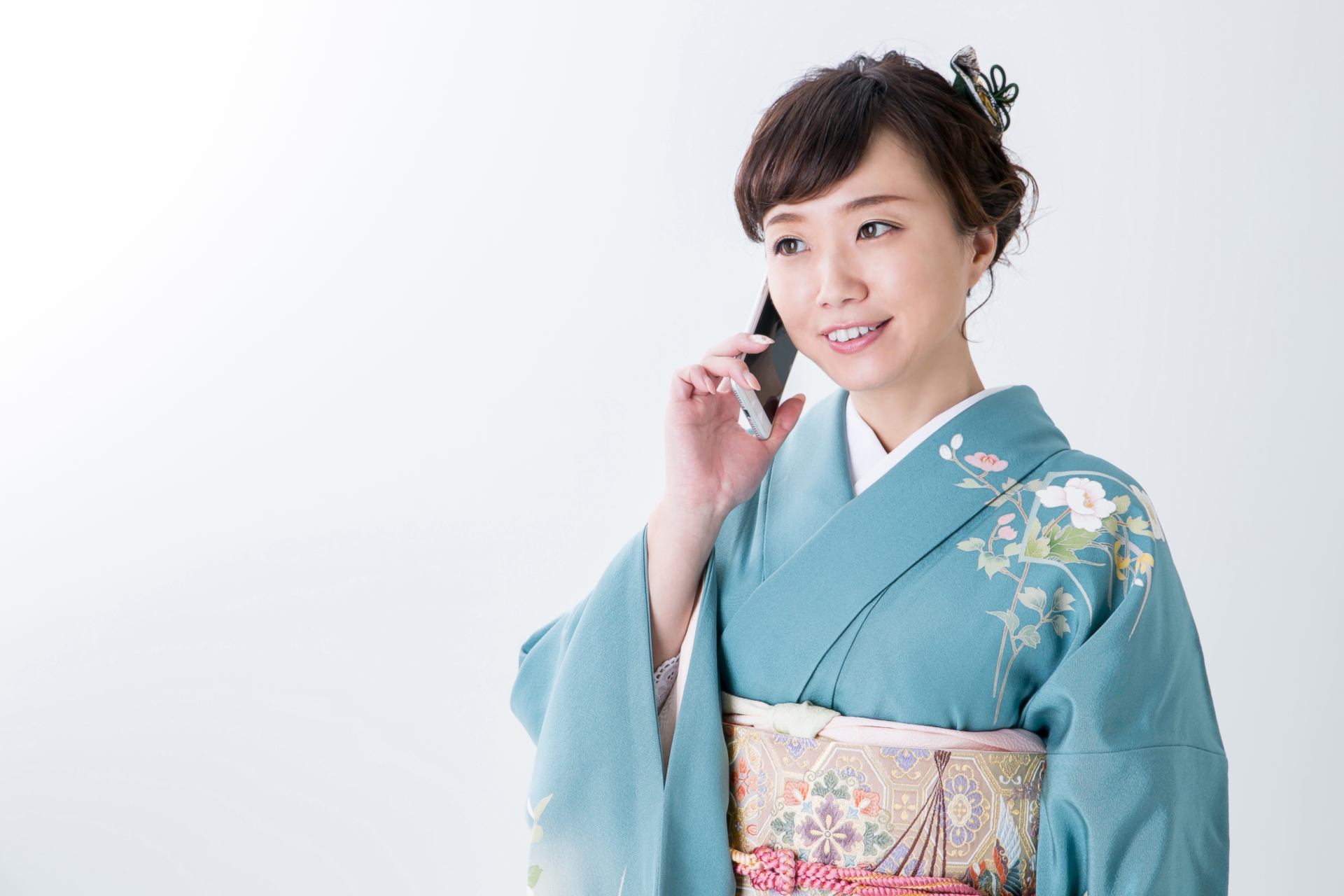Hiroshima is a region steeped in history and other important or otherwise must-experience opportunities. Although Hiroshima is widely known for its history regarding WWII, it boasts many other stunning facets of Japanese culture, history, and tradition that mesh with modern themes and activities. The Hiroshima G7 Summit is an important part of Hiroshima and you will be able to experience some of the same things as the G7 leaders and their spouses through. This tour, hosted by Tabimachi Gate Hiroshima Co. Ltd, is a regret to miss out on as it features many exclusive experiences like local dishes prepared and served expertly during live performances, after-hours access to a historical shrine, and special presentation at a museum. If dining, entertainment, culture, and overall exclusive experiences are interesting to you, then read along and secure your spot.
All About Miyajima:
Miyajima is home to one of Japan’s top three views which attracts many individuals, both from the country and overseas. This view of the “floating” gate (torii) is a captivating one to say the least. This floating red gate is part of Itsukushima shrine, which also has its buildings built over the water. The gate is remarkable because of the difference between low and high tide. At high tide, the gate appears to float on the water, but at low tide, you can see the full ingenuity of the structure. The synergy with nature over nearly 900 years is reason enough to make a visit to this shrine and its gate.
Aside from the placement, size, and sheer aesthetic of the torii, it as well as the entire complex also hold much significance culturally. The structures are prized remnants of the Heian period, which are not common. They have been meticulously maintained; the torii that can be seen now have been most recently rebuilt in 1875, originally being built in 1168. The style of this time is known for the architecture being built to complement and even be affected by the surrounding nature. The shrine was built from camphor wood, chosen for its high resistance to deterioration. While it may then seem that the additional legs built in front and behind the main legs of the torii are there to keep it sturdy, they are actually there to signify a dichotomic, esoteric style of shinto called “Ryobu Shinto,” a medieval school of Japanese Buddhism related to the Shingon sect.
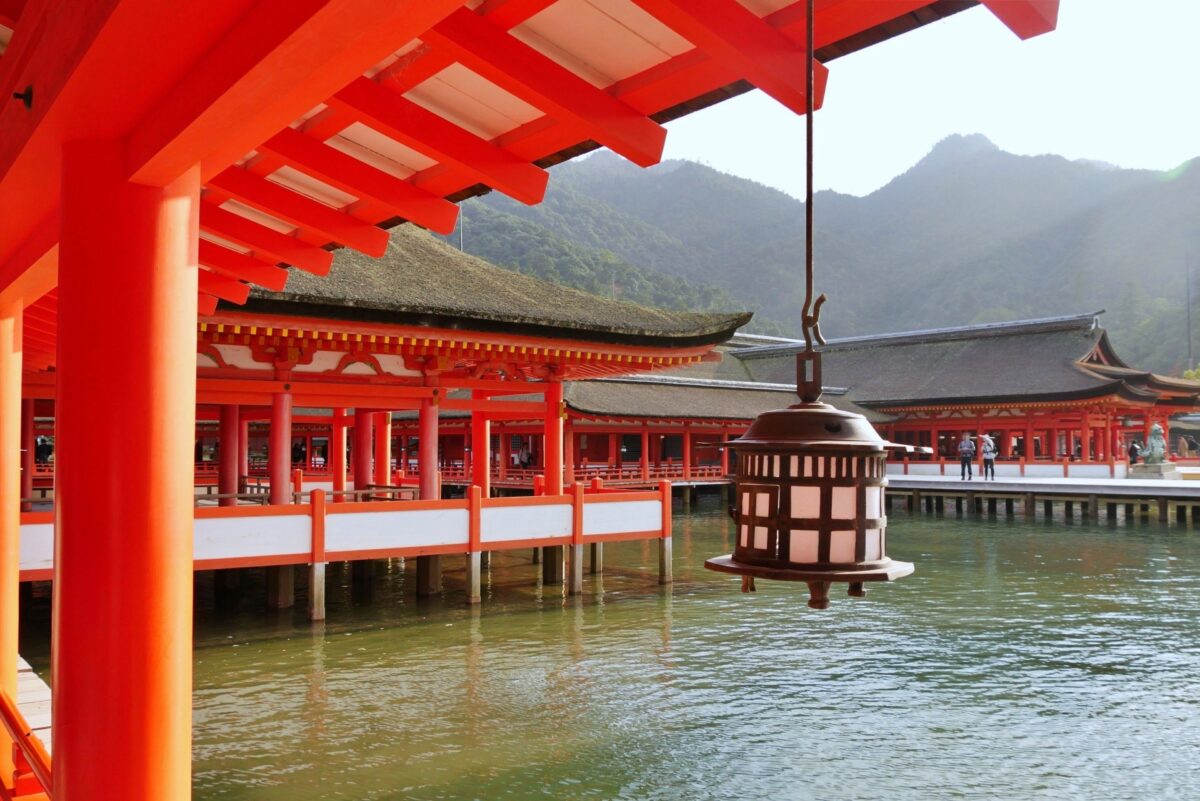
The island also shares something in common with another famous historical place, Nara. In both of these places, wild deer roam freely in the same areas that sightseers may. Miyajima also boasts other shrines, temples, shopping streets, and even a scenic ropeway to enjoy. While the area may attract a multitude of visitors throughout the day, its evening setting is calm, romantic and wonderful places to enjoy an authentic ryokan (traditional Japanese inn) experience.
The tour consists of 2 different yet similar itineraries, both of which are days full of dynamic activities that will fulfill various points of truly seeing Japan’s traditions and culture. Here are overviews of what to expect:
A special evening viewing of Itsukushima Shrine and a Bugaku performance
The tour consists of a day full of dynamic activities that will fulfill various points of truly seeing Japan’s traditions and culture. Here is an overview of what to expect:
- Traditional lunch and dinner prepared with ingredients sourced from Hiroshima that have a special meaning related to the summit; the members of the summit enjoyed these meals and have significance on their own. Dinner will be served during a performance!
- Two visits to a museum, each consisting of unique experiences and cultural learning; ancient artifacts that reveal the history and progression of the area can be seen as well as a calligraphy experience and an immaculate demonstration using a projector over a Japanese garden
- Two traditional performances, one called “Kagura”, the other called “Bugaku.”
- After-hours access to a shrine (where “Bugaku” will be held); an exclusive experience with an opportunity to meet the shrine staff as well as worshippers who will be praying. This will be the primary highlight of the tour as this is even a rare occasion for locals; the atmosphere in this sacred area and the sounds of nature come together for an incredible setting for experiencing the performance.

Bugaku is a traditional dance that has been performed for imperial courts since as far back as the year 800. The dance was meant to entertain elites of selected cities. The costumes are elaborate Buddhist works of art, with the focal point being the masks. There are many acts throughout the performance that change with the music; it is a very intricate and detailed story.
Detailed Itinerary:
1. 11:50am: Meet with guide in front of Miyajima Ferry Terminal
2. 12:00pm to 1:30pm: Akushu restaurant for lunch

- Enjoy a lunch prepared with ingredients with special connections to the Summit and Hiroshima. They are freshly sourced from both the mountains and the Seto inland sea, so you can enjoy the true taste of Hiroshima and the G7 Summit. You’ll be able to enjoy a deluxe course meal featuring a variety of amuse and appetizers, fish and meat dishes, and of course dessert. Some examples are Rillette macaroons of Seto Momiji pork (an amuse), Char Grilled Hiroshima Beef Thigh with Akitsu Potato Galette (meat dish) and Hiroshima Lemon Tarts for dessert.
3. 2:00pm to 4:00pm: Tour Miyajima History and Folklore Museum
- The party is split into two groups to enjoy the museum tour and a Japanese calligraphy experience.
4. 4:30pm to 5:45pm: Momijidani Park (Kagura performance and dinner)
- Sit in a special viewing area in front of a specially designed stage to watch a Kagura performance, a traditional performing art.
- Dinner is served during the performance at your seat from 5:00 pm.
- In the case of rain: the venue will be changed to “etto Miyajima Koryukan” (Hatsukaichi Miyajima Town Planning Exchange Center).
5. 6:00pm to 7:00pm: Itsukushima Shrine and enjoy Bugaku performance
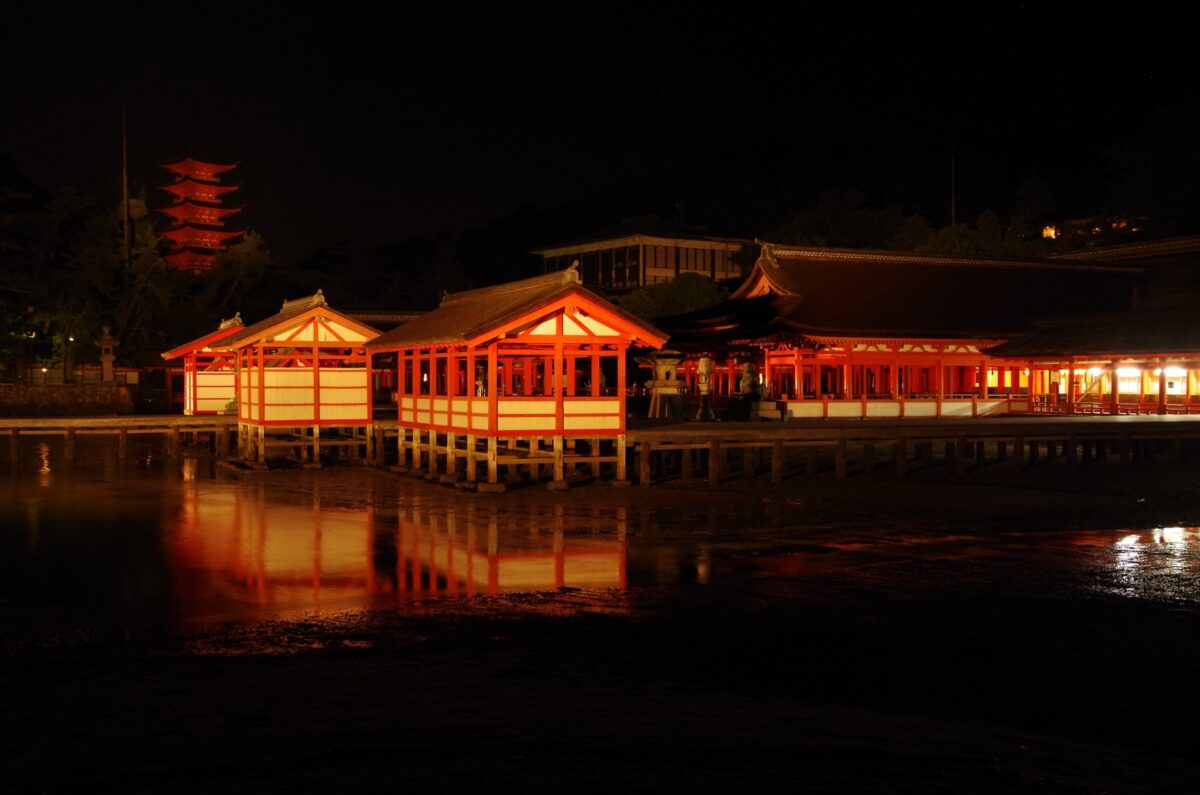
- You’ll be granted special entry after closing to this shrine in the evening where you can listen to commentary about the shrine by caretakers. You’ll also be able to observe the shrine in the evening as well as witness prayers. Afterwards, you’ll watch a Bugaku performance as the G7 leaders and their spouses did.
6. 7:15pm to 7:40pm: Return to Museum for Evening Projection Presentation
- With the museum’s Japanese garden as the background, the story of Miyajima is told via a special projection-mapping presentation over the Japanese garden in four parts (totaling about 10 minutes): Ancient Times, Middle Ages, Early Modern and Present Day. The display is very unique and visually striking, a magical experience!
7. 8:00pm: Return to Miyajima Ferry Terminal
- Participants and guides bid each other farewell and guests make their own way back to accommodations.
Tour Information
- Price (including tax): ¥19,800 per person
- Dates: Tuesday, October 22; Wednesday, October 23; Friday, October 25
- Time: 11:50am to 8:00pm
Tabimachi Gate Hiroshima Co. Ltd is the host of this incredible tour; their special access to the locations within the tour are exclusive and are a luxury to experience! Be sure not to miss out on this limited opportunity.
Tour featuring Japanese experiences in Hiroshima & a projection-mapping
- Traditional lunch and dinner prepared with ingredients sourced from Hiroshima that have a special meaning related to the summit; the members of the summit enjoyed these meals and have significance on their own.
- Viewing a traditional performance called “Kagura.” It is well known that this region, Chugoku, is famous for its highly entertaining form of Kagura!
- Visit a shrine and its grounds for sightseeing and a pleasant stroll.
- A dynamic museum visit consisting of unique experiences and cultural learning; ancient artifacts that reveal the history and progression of the area can be seen as well as an immaculate demonstration using a projector over a Japanese garden.
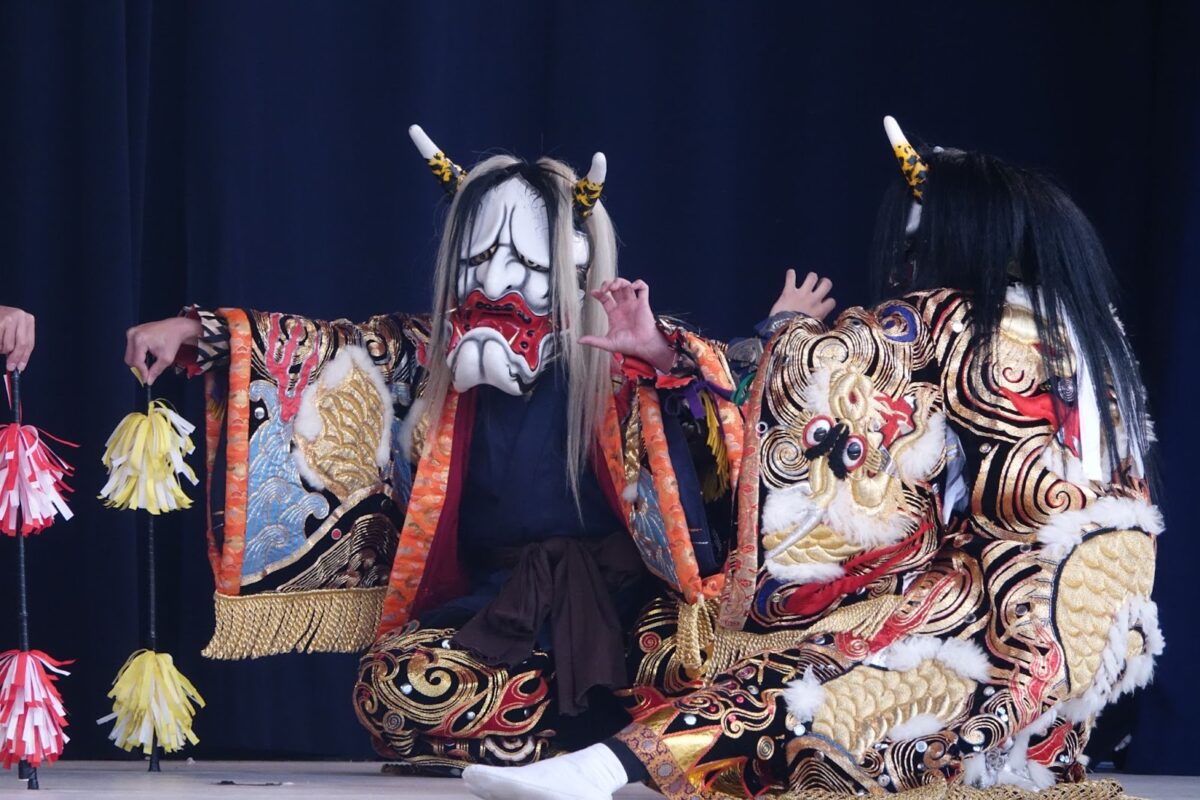
Detailed Itinerary:
1. 11:50am: Meet with guide in front of Miyajima Ferry Terminal
2. 12:00pm to 1:30pm: Akushu restaurant for lunch
- Enjoy a lunch prepared with ingredients with special connections to the Summit and Hiroshima. They are freshly sourced from both the mountains and the Seto inland sea, so you can enjoy the true taste of Hiroshima and the G7 Summit. You’ll be able to enjoy a deluxe course meal featuring a variety of amuse and appetizers, fish and meat dishes, and of course dessert. Some examples are Rillette macaroons of Seto Momiji pork (an amuse), Char Grilled Hiroshima Beef Thigh with Akitsu Potato Galette (meat dish) and Hiroshima Lemon Tarts for dessert.
3. 2:00pm to 3:00pm: Momijidani Park for Kagura performance viewing
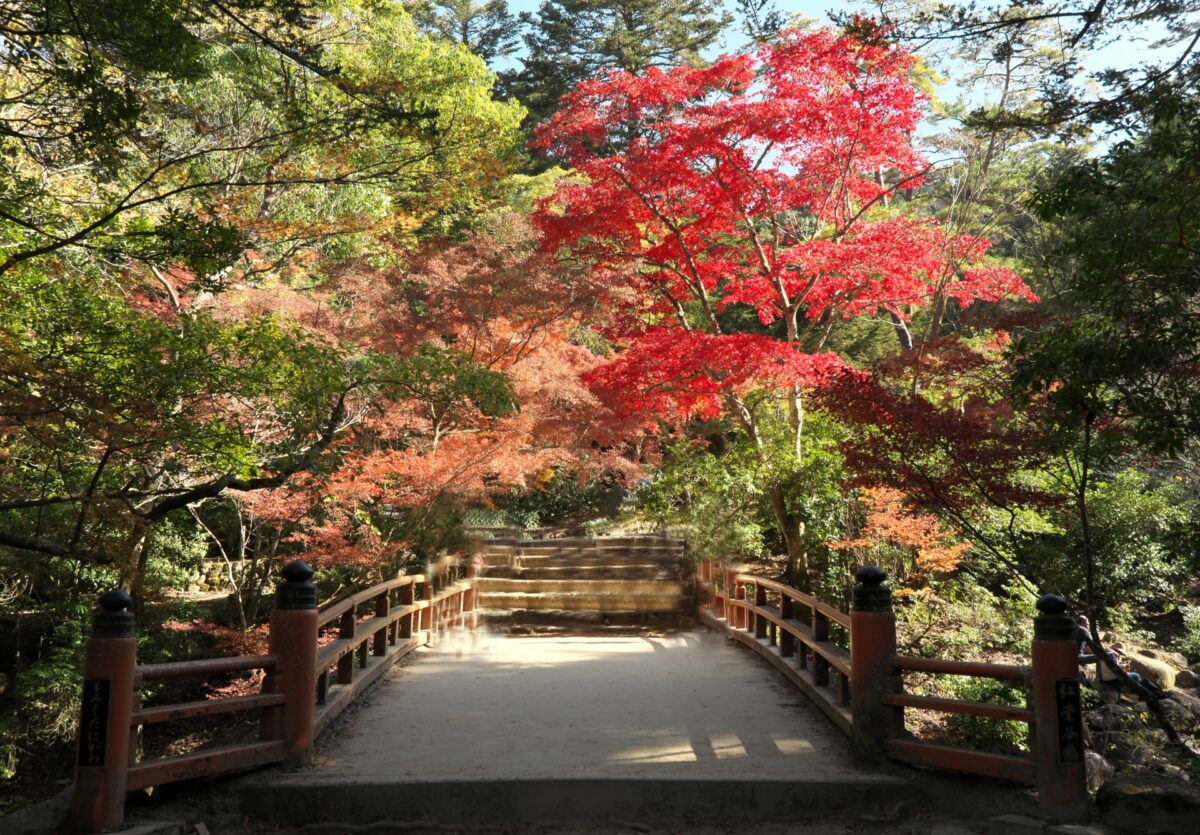
- Sit in a special viewing area in front of a specially designed stage to watch a Kagura performance, a traditional performing art.
- In the case of rain: the venue will be changed to “etto Miyajima Koryukan” (Hatsukaichi Miyajima Town Planning Exchange Center).
4. 3:15pm to 4:15pm: Visit Itsukushima Shrine
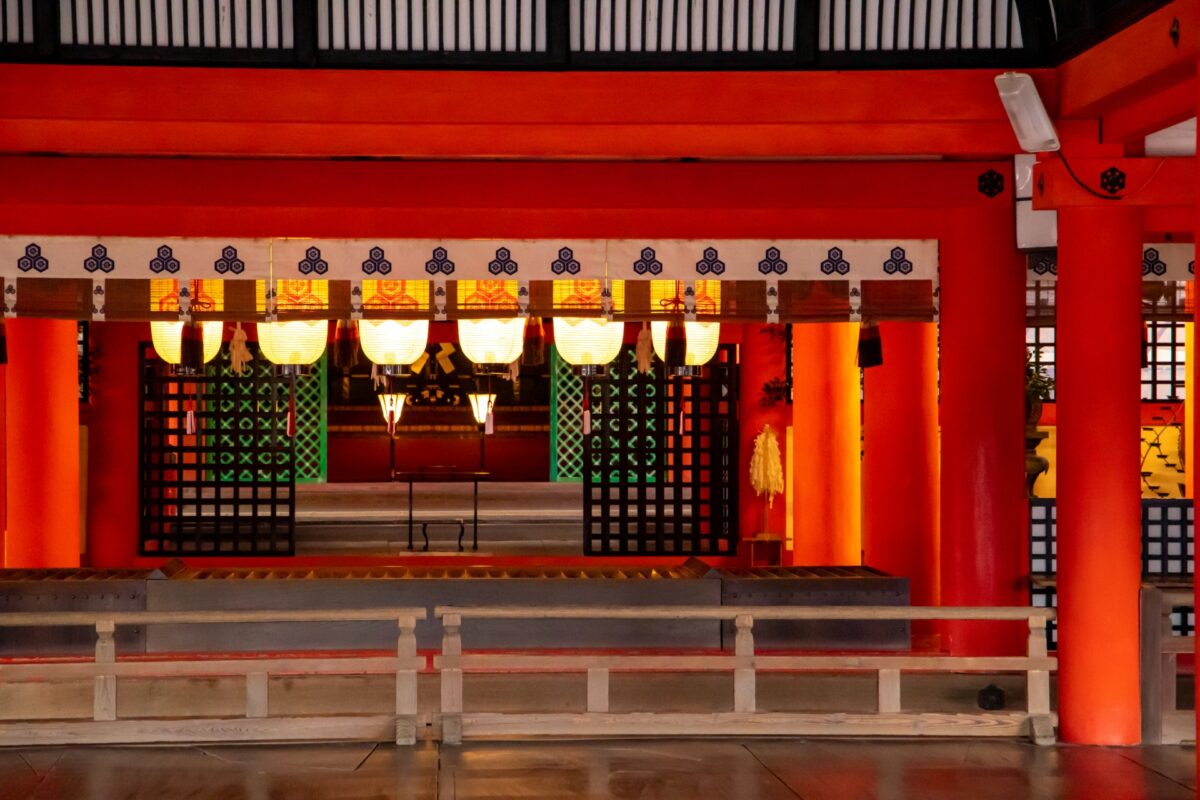
- Enjoy the beauty of the famous Itsukushima shrine with a stroll around the grounds.
5. 4:30pm to 6:45pm: Miyajima History and Folklore Museum tour and experiences
- The party is split into two groups to enjoy the museum tour and a Japanese calligraphy experience.
- With the museum’s Japanese garden as the background, the story of Miyajima is told via a special projection-mapping presentation over the Japanese garden in four parts (totaling about 10 minutes): Ancient Times, Middle Ages, Early Modern and Present Day. The display is very unique and visually striking, a magical experience!
6. 7:00pm to 7:40pm: Shiomachisushi Tsurumi for dinner
- Dine on sushi prepared using fresh fish caught in the Seto Inland Sea and Sea of Japan.
- Dinner may be served before the projection-mapping presentation.
7. 8:00pm: Return to Miyajima Ferry Terminal
- Participants and guides bid each other farewell and guests make their own way back to accommodations.
Tour Information
- Price (including tax): ¥19,800 per person
- Dates: Friday, October 18; Thursday, October 24
- Time: 11:50am to 8:00pm
Tabimachi Gate Hiroshima Co. Ltd is the host of this incredible tour; their special access to the locations within the tour are exclusive and are a luxury to experience! Be sure not to miss out on this limited opportunity.
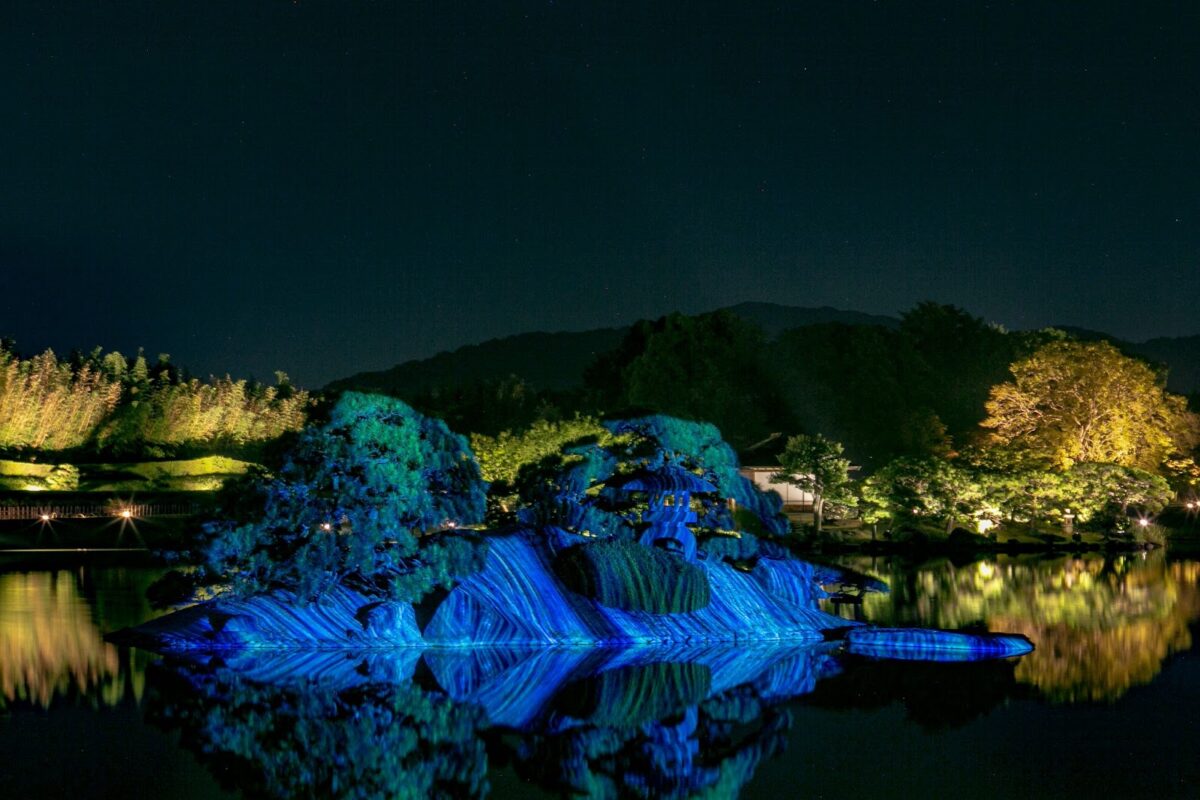
If you want to experience the unique and deep history of Miyajima and Hiroshima, then this is an experience you can’t pass up. You’ll be able to enjoy in-depth culture at every moment as well as in variety. performances, food, architecture, and learning are all abundant in this tour; with only limited dates available don’t miss out!
[PR]
Follow us on Instagram, Facebook, Twitter, and TikTok for more travel inspiration. Or tag us to get featured!
Happy traveling!


